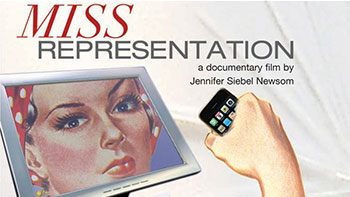In the two years since we started the #NotBuyingIt campaign to call out sexist media online, many supporters have succeeded in getting the attention of companies through social media. A few brands have been really nice about responding – apologizing immediately, taking down the offensive material and pledging to change future practices – but, unfortunately, most companies are just not that great at handling accusations of sexism. From denial to antagonism, these brands have given us various examples of how not to deal with customer concerns around the misrepresentation of gender.
So I was initially excited when one of our Facebook supporters, P—-, sent us this story about her interactions with online retailer PLNDR (who have more than 340,000 likes on Facebook), which seemed to be moving in a positive direction:
Last month, I sent a Facebook message to the company after they posted a photo on their Facebook page of a woman’s body. I cannot remember the exact image, but it did not include a face, just a very sexual image of a near bare woman. Many commented on the photo, with outrage from some men and women. Most comments were from men vocalizing how attractive the woman was, how they wanted to have sex with her, and attacking those offended by the photo calling the men “gay” for their comments.
I messaged PLNDR about the picture and they responded, “Hey P—-, we hear you and are sharing with the team. We had no intention of making you feel uncomfortable – we love and respect our women members. Next time, we’ll be more thoughtful before we post. Thank you for the feedback – we sincerely take it to heart.” The photo was taken down…victory? I thought so. Until a few days ago.
I was outraged. Not only [was it] borderline pornographic, what does it even have to do with selling clothing?? I shared the photo with several of my female friends, of which all felt uncomfortable and offended by it.
It is encouraging to hear PLNDR commit to a future free of these kinds of demeaning photos (and awesome to see an individual engage a brand in discussing sexism), but they have yet to actually remove the offending image or say anything public about it. Instead, they’ve continued to post pictures which – though far less sexualized – confirm they intend to cater to the heterosexual male gaze.
Why does it matter whether or not they remove or comment on the image in question? Obviously PLNDR is primarily a men’s retailer, but when you look at these images of women in the context of all the other images the brand posts on Facebook, it’s clear they are being facetious when they claim they are “trying to find the balance” in speaking to women and men, or that they are “celebrating” the “female form” through these photos. There’s no question that these random pictures of women are meant to be sexualized click-bait for their male consumer base.
The picture in question stands out amongst otherwise regular images of clothing. Another image shows a man’s hand grabbing a woman’s rear-end, and if you click-through the caption reads “grabbin’ deals”.
In the last Facebook message to P—-, the company’s representative implies that they may lose “clicks to the website” by deciding not to occasionally post hypersexualized pictures of women on their Facebook page. But a quick perusal of the number of “likes” on all the pictures posted this year actually shows that some images of clothing and accessories (which is, umm, what they sell) have been significantly more popular than this objectifying picture.
Their strategy, which is a common one, assumes that looking at sexualized images of women will get more men to spend more money on their products, or that pictures like this are something men need in order to spend a lot of time on a webpage. PLNDR thinks that included in the “verge culture” they claim to represent is the objectification of women. That these kinds of pictures are part of what make them an edgy male brand. The fact that these posts might come from women in the company doesn’t change things – this vision of masculinity is deep-rooted and pervasive in American culture.
PLNDR, as long as they keep these images up and make no public comment about them, is also assuming that women as consumers just aren’t that important to their business or that they will simply not mind if they are ignored or misrepresented. Yet based on the number and types of comments from women under the offending pictures, that isn’t actually the case. Instead what PLNDR is doing is actively creating a hostile environment for their female fans, and one that perpetuates hypermasculinity and misogyny.
PLNDR is just one of many brands which occasionally posts sexist things on Facebook, and they are a very mild example compared to some others. Yet this story is so revealing precisely because they aren’t Maxim or Playboy, but just another retailer building a community on Facebook. They simply want to appeal to men (even if they claim otherwise), and they seem to believe that “celebrating” the bodies of women in this demeaning way is essential to creating that appeal. But it’s not.
I don’t know if pictures of women’s butts are actually getting PLNDR significantly more traffic to their website than everything else they post, but as a manager of a Facebook page myself I know that if I get 1,000 “likes” with an on-message picture, while a random off-message picture with 700 “likes” is being called sexist by more than a few of my fans, I should probably invest my time and energy into thinking of more creative ways of replicating the former rather than the latter. Unless, of course, the latter is part of my brand’s message.
Sexism does sell, if you sell it. But that doesn’t mean that it sells better than creativity. Or that it will grow your brand more than any other option available. We always have choices. Something PLNDR and other brands might keep in mind moving forward.
Written by Imran Siddiquee at MissRepresentation.org. Follow him on Twitter @imransiddiquee



